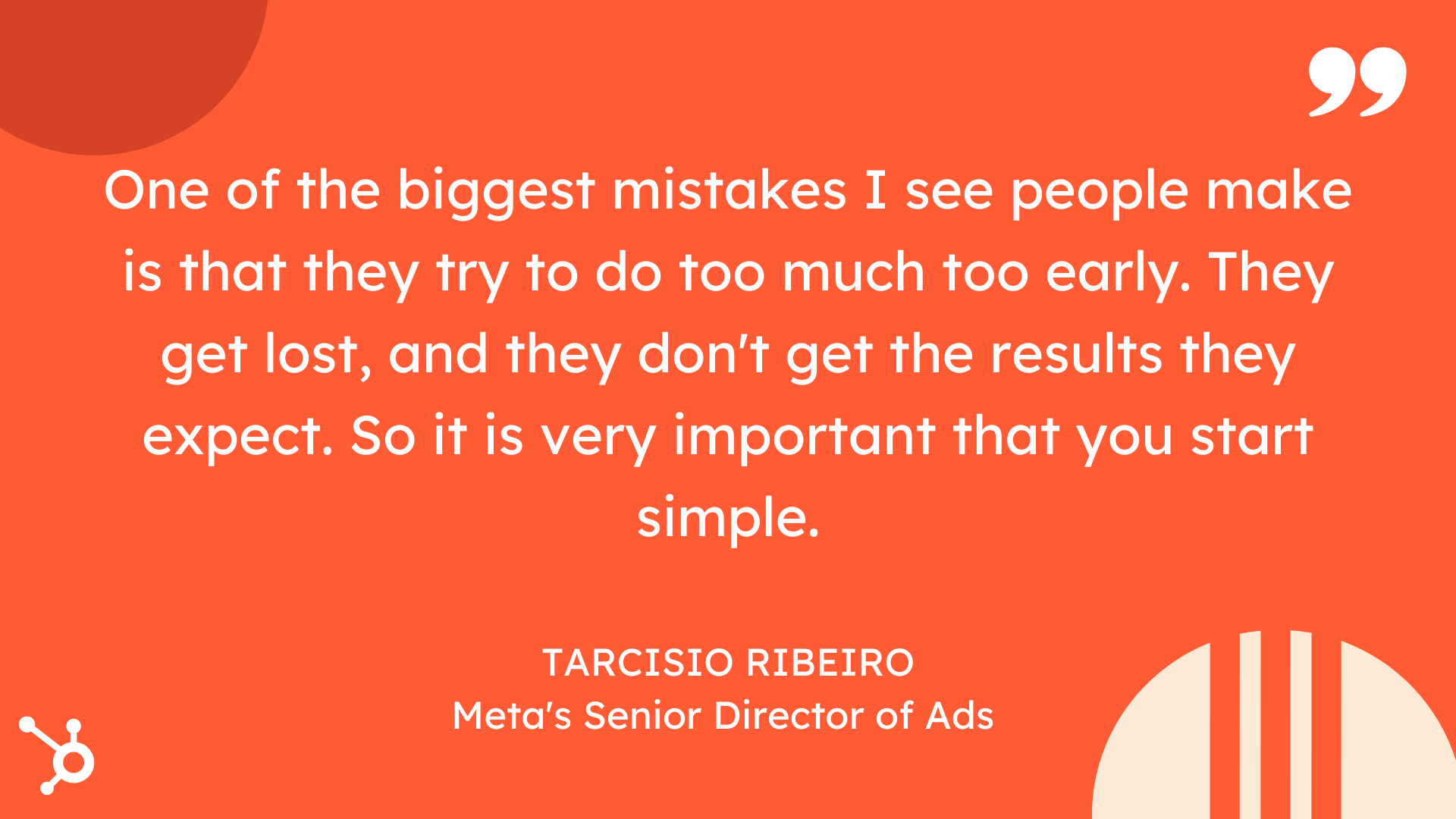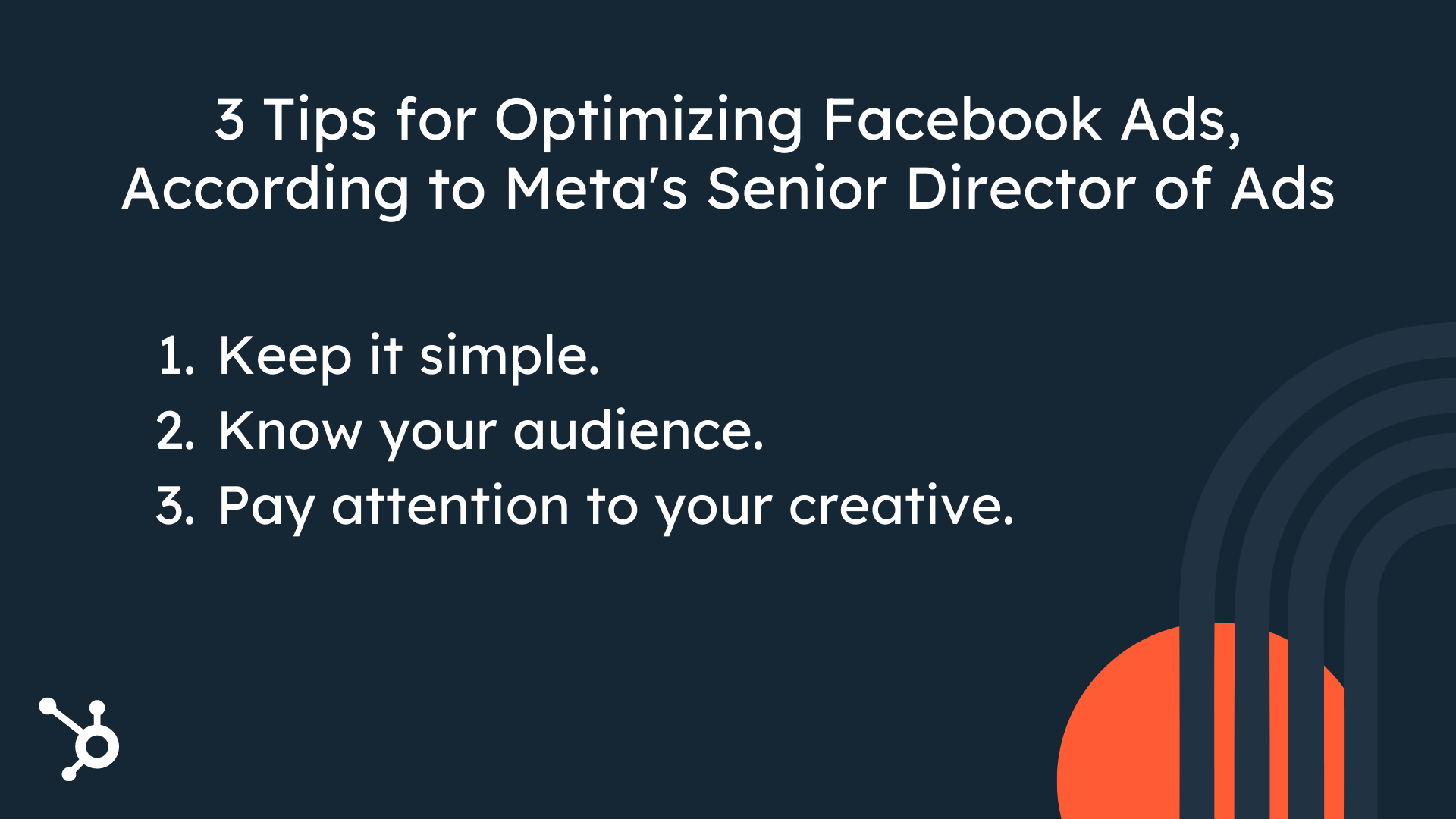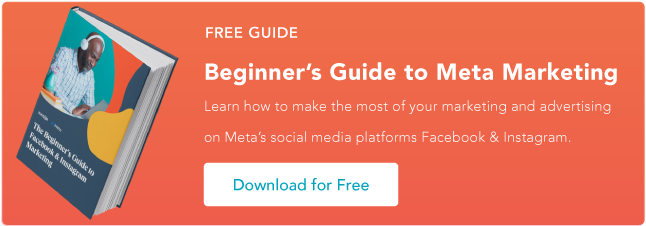3 Tips for Creating Powerful Ads, According to Meta’s Director of Ads
Facebook is an undeniably powerful platform for advertisers.
In fact, HubSpot Blog Research found Facebook is the most popular social media network for advertising in 2022, with 62% of companies currently leveraging it.
Additionally, Facebook has proven to be the social media platform that generates the biggest ROI.
But getting started on Facebook advertising can be intimidating — particularly with a limited budget. You don’t want to waste all your ad spend before you’ve identified a strong, effective long-term advertising strategy.
Here, I sat down with Tarcisio Ribeiro, Meta’s Director of Ads, to discuss his three tips for getting the most out of your Facebook ad strategy. Let’s dive in.
Tips for Creating Powerful Facebook Ads, According to Meta’s Director of Ads
1. Keep it simple.
When you’re first getting started with Facebook ads, you might feel overwhelmed by the amount of options available. For instance, you can create a boosted ad, a video ad, a poll ad, or a carousel ad (to name a few).
Ribeiro advises against getting too complex when you’re first starting out. As he puts it, “One challenge I’ve seen with new Facebook Ads users is that they see the numerous capabilities we have in our Ads Manager, and without fulling understanding how everything works, they try to play with everything. As a result, they end up wasting money because they’re either not being targeted enough, or they’re using the wrong capabilities.”
In other words: Don’t try to do too much, too quickly.

Start by identifying your objective — awareness, traffic, engagement, leads, app promotion, or sales. And, rather than creating a more complex video or carousel, start with a boosted post, which is an easy opportunity to start discovering your target audience. (More on that, next.)
From there, consider taking the time to explore the resources that can help you create an optimized ad. Ribeiro suggests that new Facebook Ads users take the time to take the Meta Blueprint trainings.
2. Know your audience — including the details.
Ribeiro told me it’s imperative you understand the audience you’re going to target — in other words, who is most likely to become a consumer.
And, equally importantly, you need to be willing to iterate over time to ensure your target audience becomes more refined.
“For instance,” Ribeiro says, “Perhaps you sell baby strollers. But beyond that, you have certain characteristics that pertain to your target audience — maybe it’s a higher-income market, or parents who are very mobile and need a lightweight stroller to take on trips. In the beginning, you may have a cohort of ten different kinds of profiles who might buy your stroller. But, over time, you’re going to see that 20% of those audiences are the ones who are most likely to purchase your product.”
Facebook ads can help you identify a more specific and niche audience to target. If we use the example mentioned above, perhaps you’d expected parents in the suburban areas surrounding Boston to purchase your strollers, but you find in your Ads analytics that most of your consumers are metro-based. As you begin to discover who your true consumer is, you can refine your ads strategy accordingly. 
Once you’ve identified your target audience, you can also leverage Facebook’s Lookalike feature to ensure your ads are capturing the attention of people who match the same characteristics as your current buyers.
Already a Meta customer? Click here to get 20% off HubSpot products.
3. Pay attention to the creative.
“One of the first things users notice and react on is going to be your creative,” Ribeiro told me, “so it’s important you pay attention to how you’re designing your ad.”
For context, an ad creative is the visual attributes of the advertisement, whether it be an image, video, or another format.
Consider, for instance, the fun, lighthearted, and bright designs in the Blue Bunny Ice Cream creative, shown below:
The ad itself needs to grab the attention of your users. If you’re unsure what type of creative will resonate best with your audience, try A/B testing different styles to identify what works best.
Additionally, the type of ad you create is equally important to consider. Ribeiro says, “Video always performs best because it’s the most engaging. But you don’t need a big budget or sophisticated equipment for video. If you’re a small business and you only have pictures, you can actually convert those pictures into a video in our Ads Manager through our partnership with Vimeo.”
Whether you’re ready to get started with Facebook Ads or take your ads strategy to the next level, hopefully these three tips have enabled you to focus in on what matters most.
The power of Facebook Ads is in the large variety of tools and features it offers businesses — but it’s imperative, for your own purposes, that you start simple; take the time to identify your correct target audience; and design a creative that will compel your audience to take action.
![]()



